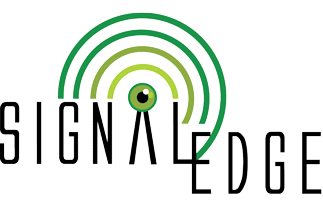- Image

Medical AI - Facilities and Wearables
According to Grand View Research, the global medical sensors market is projected to grow at a CAGR of 19.1% from 2024 to 20301. It is estimated to be valued at USD 27.20 Billion in 2025 and is expected to reach USD 55.10 Billion by 2032.
Since 1975, industry competition, consolidation, and rising healthcare costs have contributed to a slow decline in the total number of U.S. hospitals and beds offered. The Centers for Disease Control and Prevention (CDC) reported that in 1975, there were 1.5 million hospital beds, but by the year 2019 the number had dropped to just about 919 thousand. In 1975, the CDC also reported a total number of 7,156 hospitals that in 2014 had declined to 5627. This number rose slightly from 2014 to 2021 to 6200 US hospitals. During this time frame, hospitals, continuing to feel the pressure to economize and find new ways to make profit, increasingly merged with research facilities and medical centers to form Medical Service Conglomerates that attract investment, talent and patients traveling the globe to seek treatment. One of the most renowned of these is John’s Hopkins in Baltimore Maryland.
Since 1975, there has also been a growing trend in outpatient services. Here we have seen the rise of the Urgent Care Centers, that are convenient, on-demand care outlets, similar to walk-in retail clinics, but are also equipped to treat more serious ailments, including fractures, sprains, and wounds. It is here that Urgent Care Centers often serve as a first step in the patient journey to referring patients to follow-up appointments or ERs. The urgent care centers initially opened in the United States during the 1970s. Since then, this healthcare sector has rapidly expanded to approximately 10,000 centers across the United States. The centers were started by emergency medicine physicians responding to a public need for convenient access to unscheduled medical care. Generally speaking, an urgent care visit is a money-saver for patients. A 2016 study in the Annals of Emergency Medicine found that ER treatment costs were about 10 times more (an average of about $2,200) than in an urgent care center (about $168), even for patients with the same diagnosis.
Key Nixon administration legislation passed in 1972 altered the medical landscape moving profitability to being the catalyst for deployment of medical services. When it comes to expansion of those services, it is here that the system has been inherently flawed. Medical services are currently sculpted around the needed profit margin. This systemic flaw is tragically seen each time there is a flu epidemic where medical services become quickly overwhelmed. Current medical institutions have very limited expansion capability and an insatiable need to scale resources cost-effectively without diminishing service. The current hope is focused on exploiting complex sensory networks and employing artificial comprehension capabilities to expand service and profitability.
Unfortunately, the enhanced capabilities provided by advanced sensor networks cannot presently be achieved because it requires medical institutions to upgrade their network infrastructure and develop processes that integrate the large volume of new data into their every day practices. Basically, it costs too much and it is at best unclear how all the new data can be incorporated. Signal Edge ByteWiseIoT Teleporter solves their problem by allowing the existing infrastructure to carry the expanded data load by over 99.9%. Also, the real-time icon driven situational awareness and management tool will easily integrate and enhance all of their existing practices by creating a force multiplication effect. This double value proposition will propel the medical marketplace and provide an excellent center for new and reoccurring revenue.
Sensors functioning in Medical Practices, Urgent Care Centers, Hospitals, Nursing Homes, and Medical Centers include:
- Temperature probes. Used for body temperature measurement, to help provide better medication and treatment of patients, commonly referred to as thermometers.
- Force sensors. Used in kidney dialysis machines.
- Airflow sensors. Used in anesthesia delivery systems, laparoscopy, heart pumps etc.
- Pressure sensors. Used in infusion pumps and sleep apnea machines. Most of the pressure sensors are integrated with embedded systems. They are used for medical diagnosis, blood pressure monitoring, infusion pumps etc.
- Implantable pacemaker. It is a real time embedded sensor system which delivers a synchronized rhythmic electric stimulus to the heart muscle in order to maintain effective cardiac rhythm.
- Oximeter. It measures the fraction of oxygen saturated hemoglobin relative to the total hemoglobin count in the blood.
- Glucometer. It measures approximate blood glucose concentration.
- Magnetometer. It specifies direction of user by examining the changes in the earth's magnetic field that is around the user.
- Electrocardiogram sensor. It measures the electrical activity of the heart. It is called an ECG.
- Heart rate sensor. It counts the number of heart contractions per minute.
- Electroencephalogram sensor. It measures the electrical activity of the brain.
- Electromyogram sensor. It records electrical activity produced by skeletal muscles.
- Respiration rate sensor. It counts how many times the chest rises in a minute.
Target: Some 919,000 US hospital beds with 30* sensors each. *This includes environmental room sensors to measure, e.g., temperature, C0, C02, humidity.
